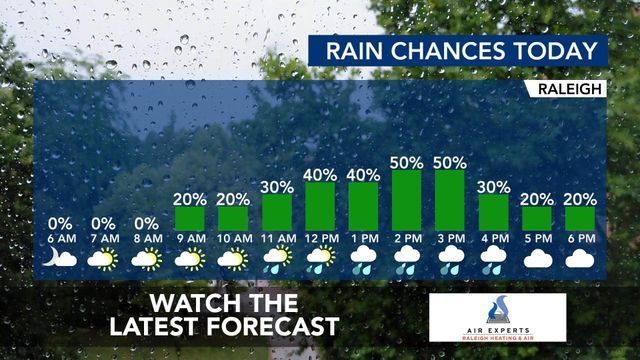NCSU research shows invasive insect could spread to NC, damage crops in five years

A new study from N.C. State University gives details about an invasive insect from Asia that can kill grapevines and damage crops.
The spotted lanternfly could reach the wine-producing counties of California by 2027, according to a new analysis from researchers at NCSU. Their discoveries also found a high chance of the insect spreading to North Carolina in five years, possibly threatening the state's agriculture industry.
In a recent study published in Communications Biology, researchers used a computer simulation tool to predict the timing of the spread of the spotted lanternfly, Lycorma delicatula, across the U.S.
They also found a high likelihood that the insect would first reach California’s grape-producing regions in 2027.
“This is a big concern for grape growers; it could lead to billions of dollars of losses in the agricultural sector,” said the study’s lead author Chris Jones, research scholar with the NC State Center for Geospatial Analytics. “With this study, we have a baseline that we can use to evaluate the effect of different management strategies.”
The spotted lanternfly was first identified in Pennsylvania in 2014. Since then, it has spread to at least 11 other states.
The lanternfly is known to damage crops such as grapes, apples, almonds, walnuts, cherries, hops, and peaches, as well as certain trees.
It kills plants by directly feeding on them, and also leave behind a residue known as “honeydew” that helps mold grow. California, which produces 82 percent of the nation’s grapes, has been identified along with Washington state as a “highly suitable” climate for the spotted lanternfly.
In Pennsylvania, the state issued a Spotted Lanternfly Order of Quarantine and Treatment, which imposes fines and even potential criminal penalties on anyone who intentionally moves the bug, at any stage of its life, from one sort of location to another via “recreational vehicles, tractors, mowers, grills” as well as “tarps, mobile homes, tile, stone, deck boards” or “fire pits.”
“It’s hard to say in advance exactly what the spotted lanternfly’s impact will be on the grape-producing regions of the West Coast, since we only have data from cold-producing regions,” Jones said. “In Pennsylvania, we’ve seen vineyard losses from the double whammy of cold and from spotted lanternflies feeding on the vines. But we do know producers can also experience losses because of the mold growth alone.”
A Pest or Pathogen Spread forecasting system was developed to track any type of pest or disease. New data helps their forecasting system get better at predicting future spread.















